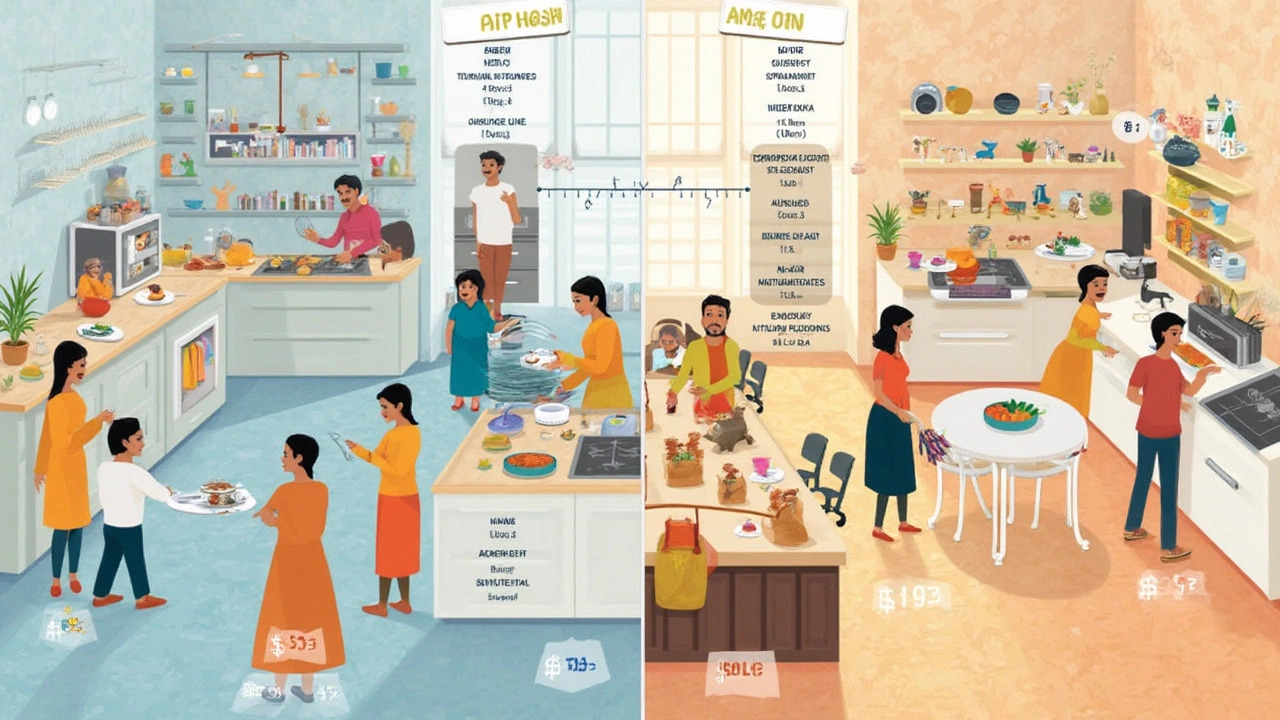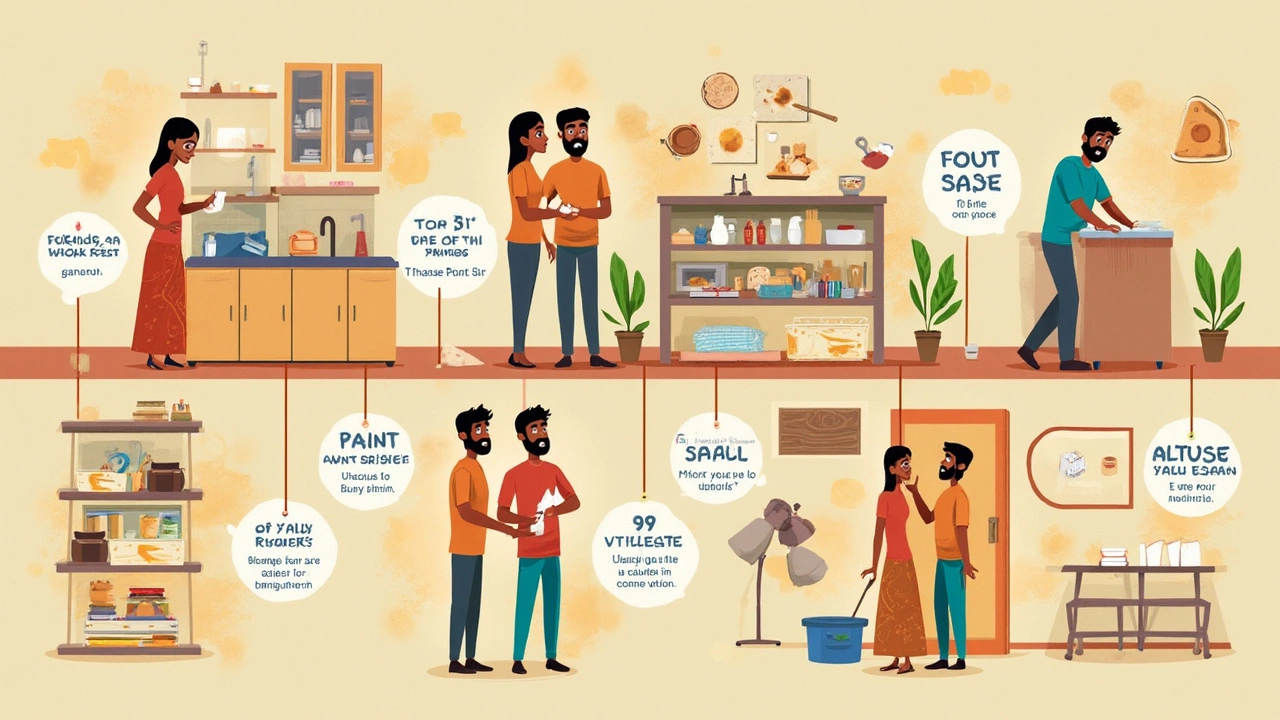Did you know a kitchen remodel can swing anywhere from a fresh coat of paint all the way to spending more than a year’s salary? The latest figure for an average kitchen remodel in the US is a cool $28,000. At a time when groceries already make you wince, it’s no wonder people have sticker shock about renovation quotes. But getting your head around what things truly cost is the first step to planning a remodel you can actually finish—and feel good about.
How Much Should You REALLY Budget for a Kitchen Remodel?
Let’s get one thing straight: not all kitchen remodels are created equal. Some folks are updating 1950s shabbiness with IKEA cabinets. Others are after magazine-worthy chef spaces with quartz slabs and smart gadgets. The cost range is wide, but where do most actual projects fall in 2025?
The 2024 Remodeling Magazine “Cost vs. Value” report pegs a minor kitchen remodel (think new fronts on cabinets, midgrade appliances, laminate counters) at about $27,000. For a major overhaul with custom cabinets, pro-grade appliances, and stone counters, you’re looking closer to $80,000—sometimes a lot more in big cities or luxury homes. Most kitchen remodels land between $15,000 on the lower end and $50,000 for a full gut renovation of an averaged sized kitchen (about 200 square feet).
Here’s a kitchen remodel budget breakdown to help see where the money actually goes:
| Category | Percentage of Budget | Estimated Cost (for $30,000 total) |
|---|---|---|
| Cabinetry & Hardware | 28-35% | $8,400–$10,500 |
| Installation/Labor | 18-22% | $5,400–$6,600 |
| Appliances & Ventilation | 14-18% | $4,200–$5,400 |
| Countertops | 9-13% | $2,700–$3,900 |
| Flooring | 7-9% | $2,100–$2,700 |
| Lighting | 5-7% | $1,500–$2,100 |
| Walls, ceilings, paint | 5% | $1,500 |
| Design Fees/Permits | 3-5% | $900–$1,500 |
| Plumbing/Electrical | up to 10% | $3,000 |
Don’t forget—hidden surprises lurk everywhere. Shockingly, over a quarter of owners busted their budgets in 2024, mostly from unexpected plumbing or out-of-stock materials. The tip? Always pad your numbers by 15% for a rainy-day fund—or for when you get inspired and want those soft-close drawers after all.

What Affects Kitchen Remodel Costs the Most?
Size does matter—at least when budgeting for your kitchen. A small galley kitchen upgrade can cost less than $10,000 if you stick to standard materials and hardly move anything. If you have an open-concept 350-square-foot space, need all-new wiring (thanks, 1970s), or want everything custom, things spiral fast.
It’s not just about square footage. Custom cabinets will cost about 50% more than stock ones. Quartz or natural stone counters can be $90–$150 per square foot, while good-looking laminate now fools the eye for under $20. Name-brand appliances—think Sub-Zero, Miele, Wolf—make your kitchen a chef’s dream for five figures alone, but there are solid, stylish options for around $3,000 for a set. Little upgrades add up: task lighting, tile backsplashes, pull-down faucets, and even the faucet finish (matte black, anyone?) play into your bottom line.
Labor usually runs 20–30% of your bill, but it varies a lot. If you’re moving plumbing or knocking down walls, you’ll need to shell out for pros—and maybe spend more on permits. And if asbestos or code issues turn up, that’s a wild card, too. Doing the work yourself can save a chunk on demolition, painting, and even some tiling if you’re brave, but remember: one botched install can eat any savings.
Where you live is another huge piece. A remodel in Kansas costs a lot less than in San Francisco or New York, mostly thanks to labor and material markups. Last year, the price gap between expensive and budget-friendly metros was nearly 30% for similar scopes. Timing matters, too—prices can shoot up when materials are in short supply or contractors are booked solid after a storm or housing boom.
Sometimes, the style you want drives the budget. Open shelving is all the rage on Pinterest, but hidden storage and upscale hardware pump up the price. Same goes for luxury items like wine fridges, smart ovens, or full-height pantry cabinets. None of these are must-haves, so choose your splurges wisely. Want a hidden trash pullout or a pro-grade cooktop? Make those numbers line up before you give the green light.

How to Plan and Stretch Your Kitchen Remodel Budget
It sounds boring, but every great kitchen starts with a spreadsheet. List priorities: do you care more about cabinets, appliances, or maybe just getting rid of that peeling linoleum? Break costs into “must-have” and “nice-to-have” piles. This way, you protect the things that will actually make you happier or add value to your home—and you’re less likely to blow the bank on impulse upgrades.
Here are some tried-and-true tips for keeping your kitchen reno from going haywire:
- Set a firm max spend. Be honest about what you can afford without sacrificing your grocery budget (or your sanity).
- Keep your kitchen layout the same if possible. Moving gas lines, plumbing, or walls is pricey. Work with the footprint you have and splurge on finishes you’ll enjoy every day.
- Mix high-low. Save on cabinet boxes and go all in on drawer fronts, or skip the high-end backsplash in favor of pricier counters. You don’t have to upgrade everything at once.
- Shop around for big-ticket items: waiting for appliance sales, closeouts, or even scratch-and-dent deals can mean thousands in savings.
- Get at least three quotes from licensed contractors. Don’t just jump on the cheapest bid; check experience and reviews. The headaches of shoddy work always cost way more to fix later.
- DIY what you’re comfortable with. Painting, demo, and sometimes even tiling can be handled with YouTube as your guide (and a week you don’t mind living in sawdust).
- Bake in a buffer. Assume no matter how careful you are, something will pop up. Plan for 10–15% overage in your budget.
- If you’re selling soon, resist over-remodeling. You probably won’t get every dollar back. Stick to solid basics and let the next owner go wild with their style.
One surprise: even little changes can refresh your kitchen. Swapping out hardware, adding under-cabinet lighting, or just painting cabinets with the right prep can make things look new for a fraction of the cost. No need to rip everything down if you’re happy with the bones.
Finally, look for clever financing—if you need it. Home equity lines of credit, personal loans, and even some contractor payment plans can work, but do the math. Don’t take on debt you can’t comfortably handle, especially since remodels rarely come in at the low estimate. The best move? Save up so you start with less stress and more choices.
If you plan, prioritize what matters, and keep an eagle eye on your numbers, you’ll end up with a kitchen you’ll love (even if you’re just eating takeout in the meantime).


Write a comment